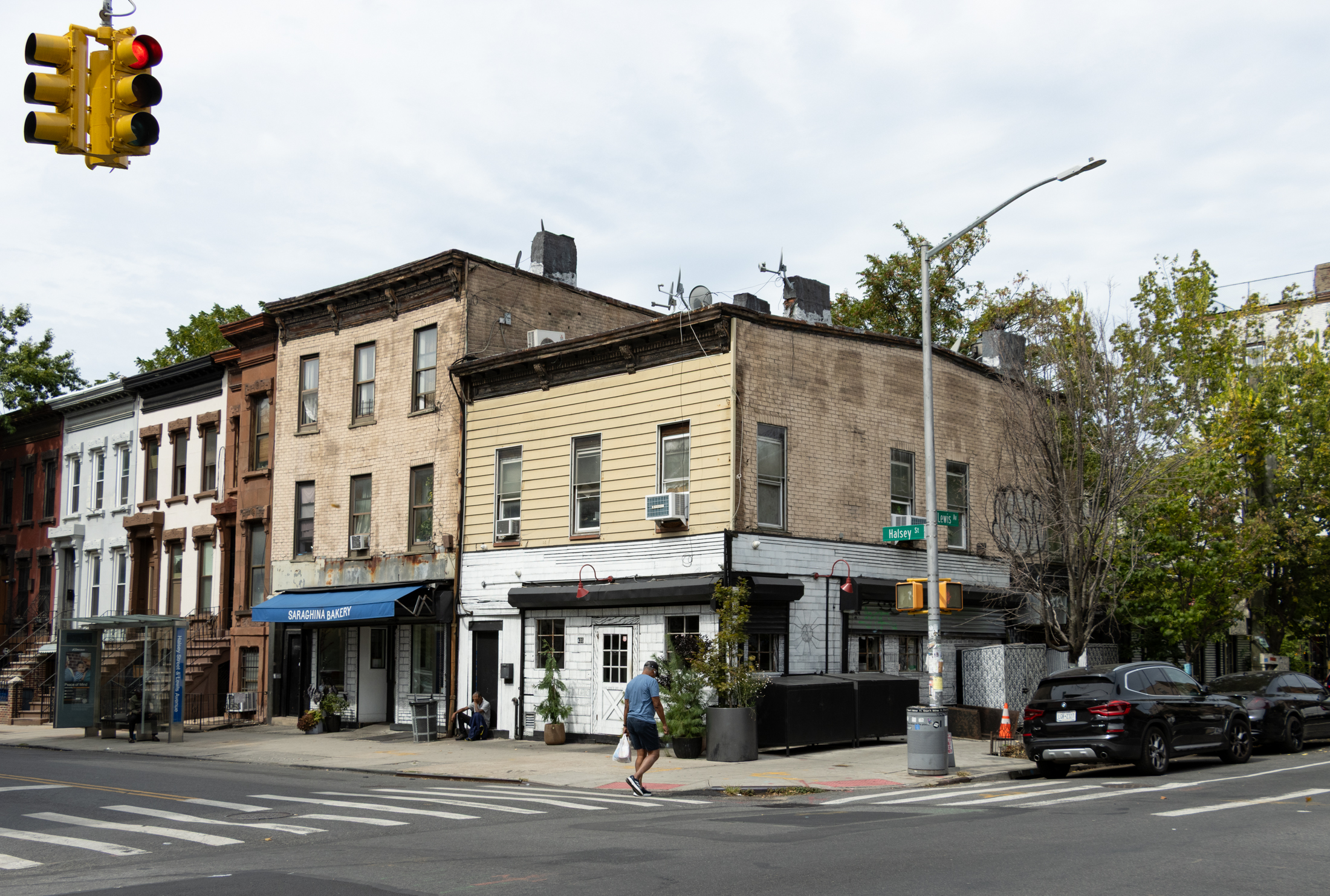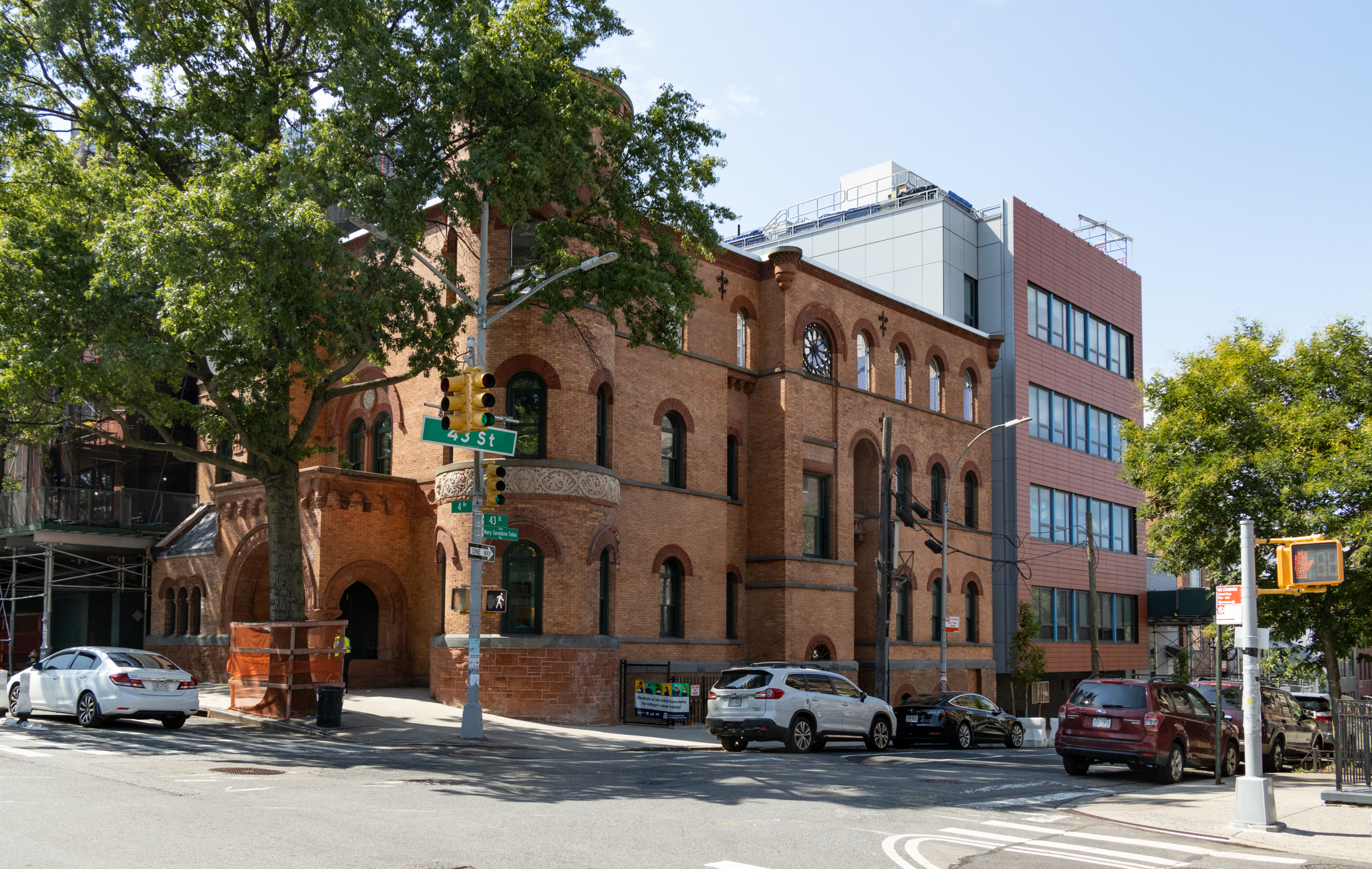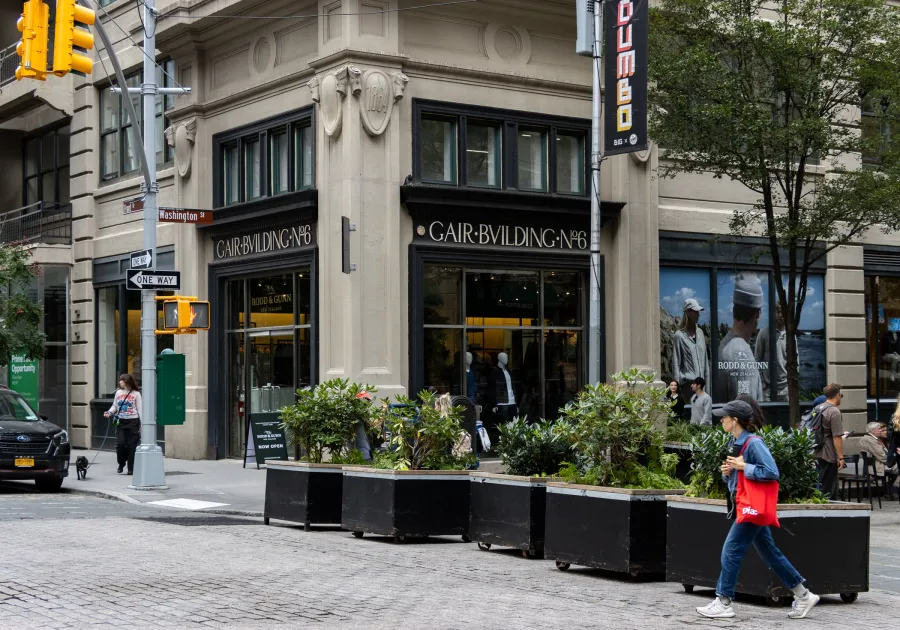All About Luyster Creek
First off, there were goats. Secondly, Luyster Creek has been mentioned on Brownstoner Queens before, in this June 2013 posting — “Will Luyster Creek Ever Get a Make-Over?” After reading that post, it struck my fancy to wander over and take a look. The waterway is an industrial canal which can be visited, in Astoria, at…


First off, there were goats.
Secondly, Luyster Creek has been mentioned on Brownstoner Queens before, in this June 2013 posting — “Will Luyster Creek Ever Get a Make-Over?” After reading that post, it struck my fancy to wander over and take a look. The waterway is an industrial canal which can be visited, in Astoria, at 19th Avenue near 37th Street and the Steinway Piano Factory.
Luyster Creek has gone by a few different names over the centuries, by the way.
Astoria, and all of western Queens in fact, is ancient.

Luyster was the name of a Dutch family of some prominence who settled in the area, and there was likely a natural stream here once. There used to be an island at its junction with the larger harbor, but the USACE took care of that just before the First World War, during a period of vast upgrades to the waterfront of western Long Island.
The creek opens up into Bowery Bay, which allows mariners and barge traffic easy access to Flushing Creek, the East River, or the Long Island Sound. Calling it Luyster is an affectation, for the last half of the 19th century and the first half of the 20th it was Steinway Creek, or Steinway Canal.
William Steinway bought the surrounding property in 1870, as historian Jeffrey A. Kroessler informs.
The Steinway used to float logs of mahogany and other valuable feedstock through here, which would be fed into the mill and used in the manufacture of their eponymous pianos.
Really.
The Greater Astoria Historic Society has a shot of the operation up at their smugmug page — check it out.

There’s been a lot of talk about human powered boating, kayaks and such, operating out of here, but I have to say that the water quality witnessed here was pretty distressing. Remember, I’m the Newtown Creek guy, so I know of what I speak when the subject includes stinky water. Tolerable but very much present was the rotten egg smell of sulfur dioxide and the distinctive odor of untreated sewage was wafting about as well.
There was also a lot of illegal dumping happening around the street end and waterfront, a real mess and a real shame.

The smell was no doubt being caused by this spillway, which might have been a sanitary or storm drain, or both.
In modern times, the Steinway or Luyster Creek enjoys employment on its eastern shore as a fuel terminal serviced by tug and barge combos. The western shore is part of an enormous Consolidated Edison property which houses power plants and other electrical infrastructure. The Bowery Bay Sewage Treatment Plant is also found nearby, as is the Rikers Island Causeway.
Everything is built on landfill.
The ConEd property sits on top of a manufactured gas plant which has left behind an unfortunate environmental legacy.

Somewhat iconic to those of us who wander the shorelines of Queens with its garland of former industrial sites, this wooden structure looks like it used to be a dock, and is what everyone focuses on when visiting this curious spot at the wild northern edge of Astoria. The streets directly surrounding Luyster Creek are dominated by the Steinway Factory, warehouses, and trucking businesses. A complex of parks and playgrounds is installed on part of the ConEd property as well, mainly Little League Baseball and Soccer fields from what I can tell.
Just a block or two away, it’s Astoria proper, with picture perfect houses and verdant displays of yard and garden.

Haven’t figured out the whole “goat thing” as of yet, but one thing I’ve learned is to never question Queens. If she wants you to see goats roaming around, there’s a reason, and you just have to put your trust in her hands.
Queens will never let you down.
Newtown Creek Alliance Historian Mitch Waxman lives in Astoria and blogs at Newtown Pentacle.





I can explain the goat, but there is a funny story that may offend some people and a bland boring version. Choose wisely.
Regarding Luyster’s Creek, I found your article while doing genealogical research. In a profile of Hendrick Harmensen, the first european settler of the area, I used some of your material, for which I noted you as a source, as well as James Riker’s The Annals of Newtown (1852)…
Newtown was known by other names back then. It was originally Mespactes, after the Native Americans who lived there and sold the property to the settlers. That was shortened to Mespat, and later to Maspeth. It was at the northern border of Mespat, called Fish’s Point, that Hendrick had his farm. The farm, itself, was known as the Poor Bowery, and after Hendrick’s death, it was eventually given to the Dutch Church. The church purchased and annexed the island nearby “for the purpose of driving thereon their hogs and cattle.” They called it the Poor Bowery Island, which was later named after a subsequent owner as Luyster’s Island. Today, there are no islands due to development, and the creek is polluted. It was last used to float mahogany logs to the Steinway Piano factory that stands nearby. On one side is a fuel terminal with tugboats and barges, and other side is a Consolidated Edison facility with power plants sitting on polluted land. Nearby is the Bowery Bay Sewage Plant.
Can someone explain the goat? Kinda cute…
I can explain the goat, but there is a funny story that may offend some people and a bland boring version. Choose wisely.